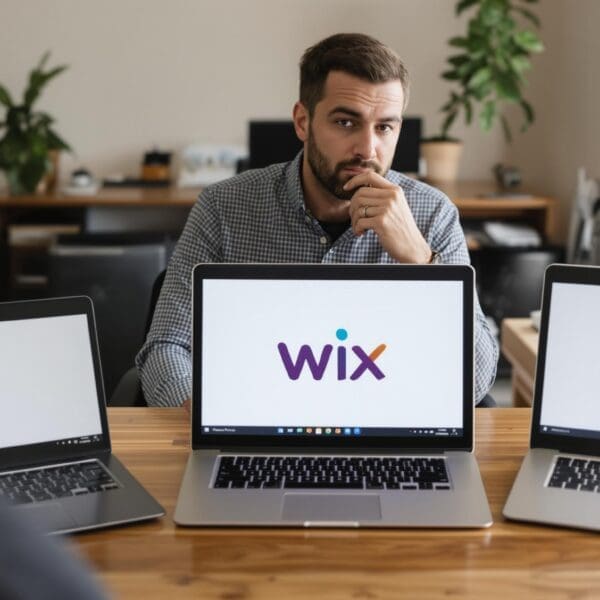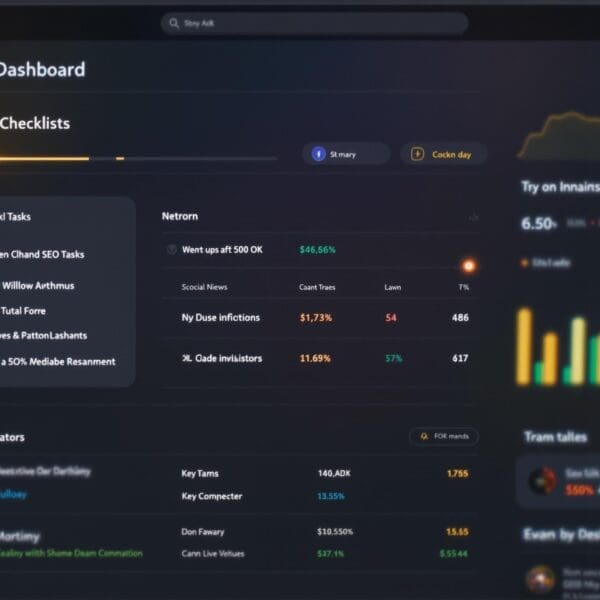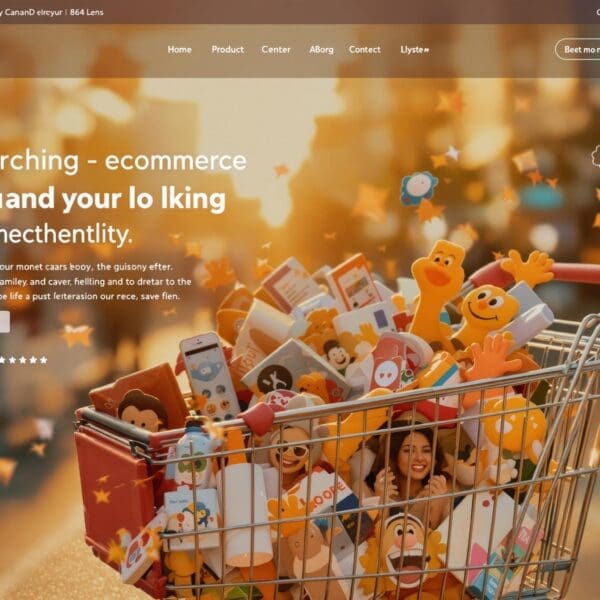Table of contents
URL structure is a fundamental element of search engine optimization (SEO) and user experience. A well-optimized URL makes content easier for search engines to understand, and improves navigation for users. In this article, we’ll explore in depth the importance of URL structure optimization, the best practices to adopt and the impact on SEO and user experience. Here are the key points to remember:
- Clear structure: legible URLs with relevant keywords, separated by hyphens
- Consistency: Maintain a logical structure throughout the site
- User impact: Optimized URLs improve navigation and trust
- Sustainable strategy: Long-term planning and regular URL monitoring
URL structure plays a vital role in website SEO. Not only does it influence search engines’ understanding of content, but also the user experience. In this publication, we’ll take a look at the different aspects of the importance of URLs for SEO and how to optimize them effectively.
Table of contents
ToggleUnderstanding the anatomy of an SEO-optimized URL
A URL (Uniform Resource Locator) is the web address that leads to a specific page on your site. Its structure should be clear, concise and reflect the content of the page. Key elements to consider are :
- Legibility: URLs should be easy for humans to understand. Avoid special characters, accents and capital letters, which can cause confusion.
Relevant keywords: Include keywords related to the page content. This helps search engines determine your page’s relevance to user queries.
Use of hyphens: Separate words with hyphens (-) rather than underscores (_). Search engines consider hyphens as word separators, which is not the case with underscores.
URL length: Opt for short, descriptive URLs. Although Google can handle long URLs, shorter addresses are better for the user experience and can improve click-through rates.
Example of a well-structured URL:
https://www.votresite.com/categorie/nom-de-l-articleThis structure is clear, includes relevant keywords and uses hyphens to separate words.
Best practices for URL optimization
To maximize the SEO effectiveness of your URLs, consider the following recommendations:
- Use HTTPS: Make sure your site uses HTTPS rather than HTTP. Google considers security a ranking factor, and HTTPS protects user data.
- Avoid empty words: Remove articles, prepositions and other non-essential words from your URLs to make them more concise.
- Maintain a consistent structure: Adopt a logical URL structure that reflects the organization of your site. For example, use categories and sub-categories to structure your content.
- Use static URLs: Static URLs are preferable to dynamic URLs. Static URLs remain constant, while dynamic ones often contain variable parameters that may be less comprehensible to users and search engines.
- Avoid unnecessary redirects: Redirects can slow loading times and dilute page authority. Use them only when necessary, for example when changing a URL.
- Use sub-domains with care: Sub-domains are treated as separate entities by search engines. If content is closely related to the main domain, consider using subdirectories to maintain domain authority.
- Note that modifying existing URLs without redirecting can harm SEO. If you need to change a URL, always use a 301 redirect to preserve your website’s SEO.
Over the course of my career, I’ve often found that companies overlook the importance of URLs in their SEO strategy. For example, I worked with a law firm whose website used automatically generated URLs filled with random characters.
By restructuring their URLs to include relevant keywords and making them more readable, we managed to double their local visibility in less than six months.

Impact of URL structure on SEO
An optimized URL structure has a positive influence on several aspects of SEO:
Crawlability: Well-structured URLs make it easier for search engine spiders to crawl your site, ensuring efficient indexing of your pages.
Relevance: Including keywords in the URL enhances the page’s relevance to specific queries, improving its ranking in search results.
Click-through rate (CTR): Clear, descriptive URLs can encourage more users to click on your link when it appears in search results.
The impact of URLs on user experience and click-through rates
URLs are not only significant for search engines, they also play a crucial role in the user experience. A well-structured URL can :
- Improve navigation: Clear, logical URLs help users understand your site’s structure and navigate more easily.
- Increase trust: Clean, professional URLs inspire trust in visitors, which can boost conversion rates.
- Influencing click-through rates: URLs are visible in search results. An attractive, relevant URL can encourage more users to click on your link.
Here’s a comparative table illustrating the impact of URLs on user experience:
| URL type | Example | Impact on user experience |
|---|---|---|
| Optimized URL | https://www.sportshop.com/equipement/chaussures-de-course | Positive: Clear, informative, inspires confidence |
| Unoptimized URL | https://www.sportshop.com/product?id=12345 | Negative: Confusing, uninformative, may appear unreliable |
URL optimization is an integral part of an overall SEO strategy that includes other aspects such as content, tags and site structure, leading to a significant increase in organic traffic and conversion rates, as users could now immediately understand the page content.
For a complete approach, we recommend using tools like Google Search Console to analyze your URL structure and identify opportunities for improvement.
Tools for analyzing and optimizing your URLs
Optimizing URL structure is essential for improving your website’s SEO and user experience. Several powerful tools are available to help you with this process:
1. Screaming Frog SEO Spider
Screaming Frog is a powerful tool that crawls your site’s URLs to identify potential SEO problems. It can analyze title tags, H1 and H2 tags, meta descriptions and much more. The free version offers analysis of up to 500 URLs, enough for many sites. This tool is particularly useful for detecting duplicate, missing or inappropriate-length tags, as well as for identifying pages containing duplicate or insufficient content. It also helps identify broken links and 404 errors, improving the overall quality of your site.
2. Google Search Console
Google Search Console is a free service offered by Google that provides valuable information on how the search engine perceives your site. It offers data on the performance of your pages, the keywords that generate traffic, and warns of any indexing or URL problems. This tool is indispensable for monitoring and optimizing your site’s presence in search results.
3. Sitechecker
Sitechecker is an online tool that analyzes your website’s SEO and provides a detailed report with tips for improving your search engine positioning. It evaluates aspects such as URL structure, page loading speed and mobile compatibility. Although some advanced features are chargeable, the free version already offers a comprehensive analysis for small and medium-sized businesses.
4. Alyze
Alyze is an SEO analysis tool that stands out for its “Page Explorer” module. This module allows you to navigate through a site’s pages in SEO mode, making it easier to read heading tags and highlighting important elements for SEO. In addition, Alyze offers a SERP previewer, helping to understand how your pages appear in Google’s search results.
5. Google PageSpeed Insights
Although primarily focused on performance, Google PageSpeed Insights provides information on the loading speed of your pages, a factor influencing SEO. Well-structured and optimized URLs contribute to better performance, and this tool helps you identify areas for improvement.
Common mistakes to avoid when optimizing URLs
When optimizing URL structure, certain errors can harm your SEO and user experience. Here are the most common:
1. Use URLs that are too long or complex
URLs that are excessively long or include special characters can be difficult to read and share. They can also be truncated in search results, making it harder for users to understand them.
Avoid:
https://www.votresite.com/produits/12345/nom-du-produit-avec-une-description-très-longue-et-des-caractères-spéciaux-#!%20
Best of all:
https://www.votresite.com/produits/nom-du-produit
2. Neglecting redirects after URL modification
Modifying a URL without setting up a proper 301 redirect can result in 404 errors, adversely affecting SEO and user experience. Redirecting old URLs to new ones is essential to maintain traffic and page authority.
3. Use irrelevant keywords or keyword stuffing
Including irrelevant keywords or practicing keyword stuffing in your URLs can be perceived as spam by search engines, resulting in penalties. It’s better to use relevant keywords that accurately describe the content of the page.
4. Use special characters and capital letters
Special characters and capital letters can cause encoding and legibility problems. We recommend using only lower-case letters, numbers and hyphens to separate words.
5. Failure to use HTTPS protocol
Security is an important ranking factor for search engines. Not using the HTTPS protocol can negatively affect your SEO and deter users from visiting your site due to potential security issues.
Tips for a sustainable URL strategy
To ensure effective and lasting optimization of your URLs, consider the following recommendations:
Anticipatory planning: As soon as you design your site, define a logical, scalable URL structure that can adapt to the future growth of your content.
Ongoing training: Make your team aware of best practices in URL optimization to ensure consistency in the creation of new pages.
Regular monitoring: Use analysis tools to monitor URL performance and quickly identify any problems.
- Stay consistent: Maintain a uniform URL structure throughout your site.
Adaptability: Stay abreast of search engine algorithm updates and adjust your URL strategy accordingly to maintain or improve your ranking.
As an SEO expert, I’ve found that sites that maintain a consistent, optimized URL strategy over the long term enjoy a significant competitive advantage. This approach is part of a broader vision of SEO improvement, which is essential to ensure the lasting visibility of your website.
In short, URL structure is a fundamental element of your website’s SEO optimization. By following these best practices and remaining vigilant, you can create URLs that not only improve your SEO, but also the overall experience of your users. Remember, every detail counts in the competitive world of SEO, and a well thought-out URL can make all the difference.















